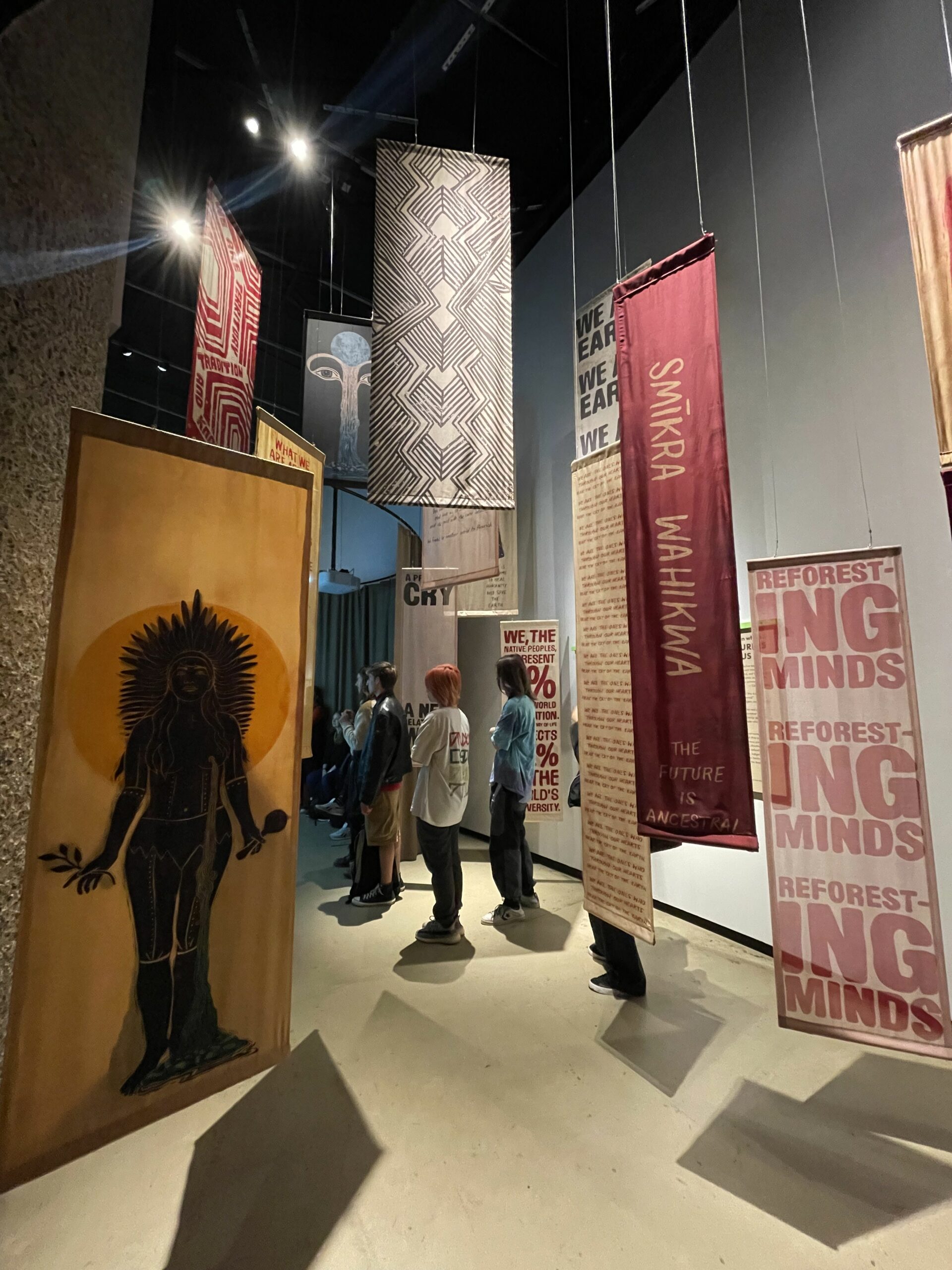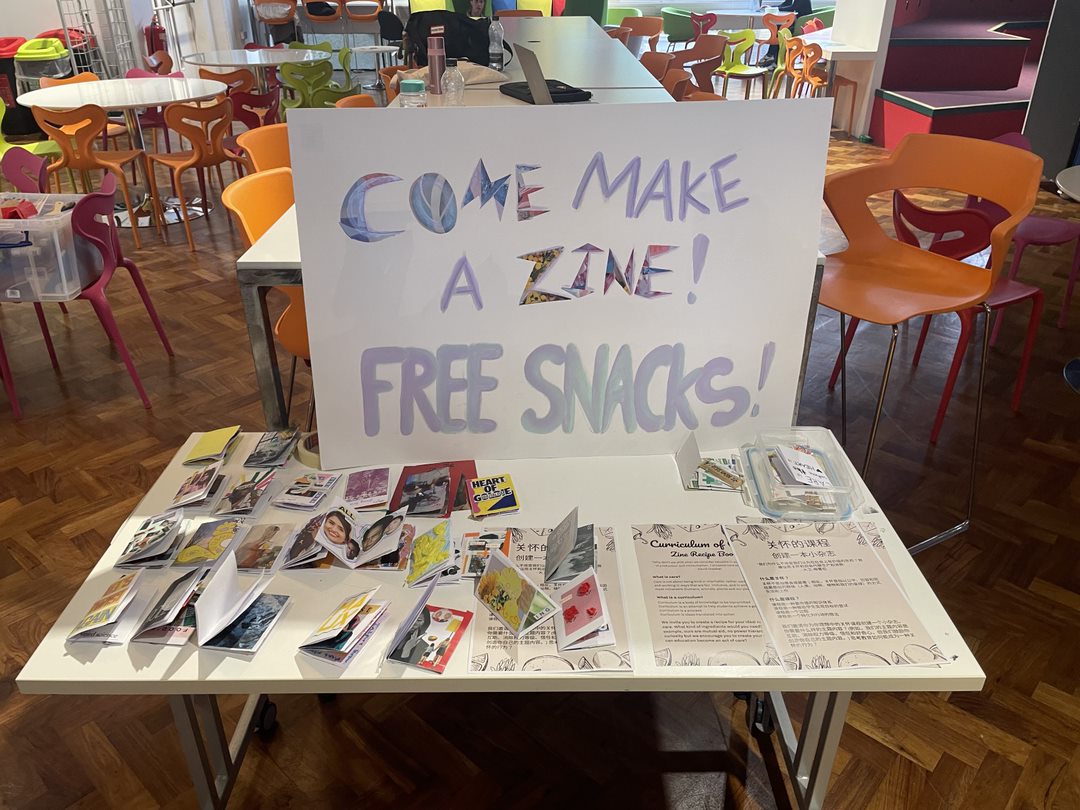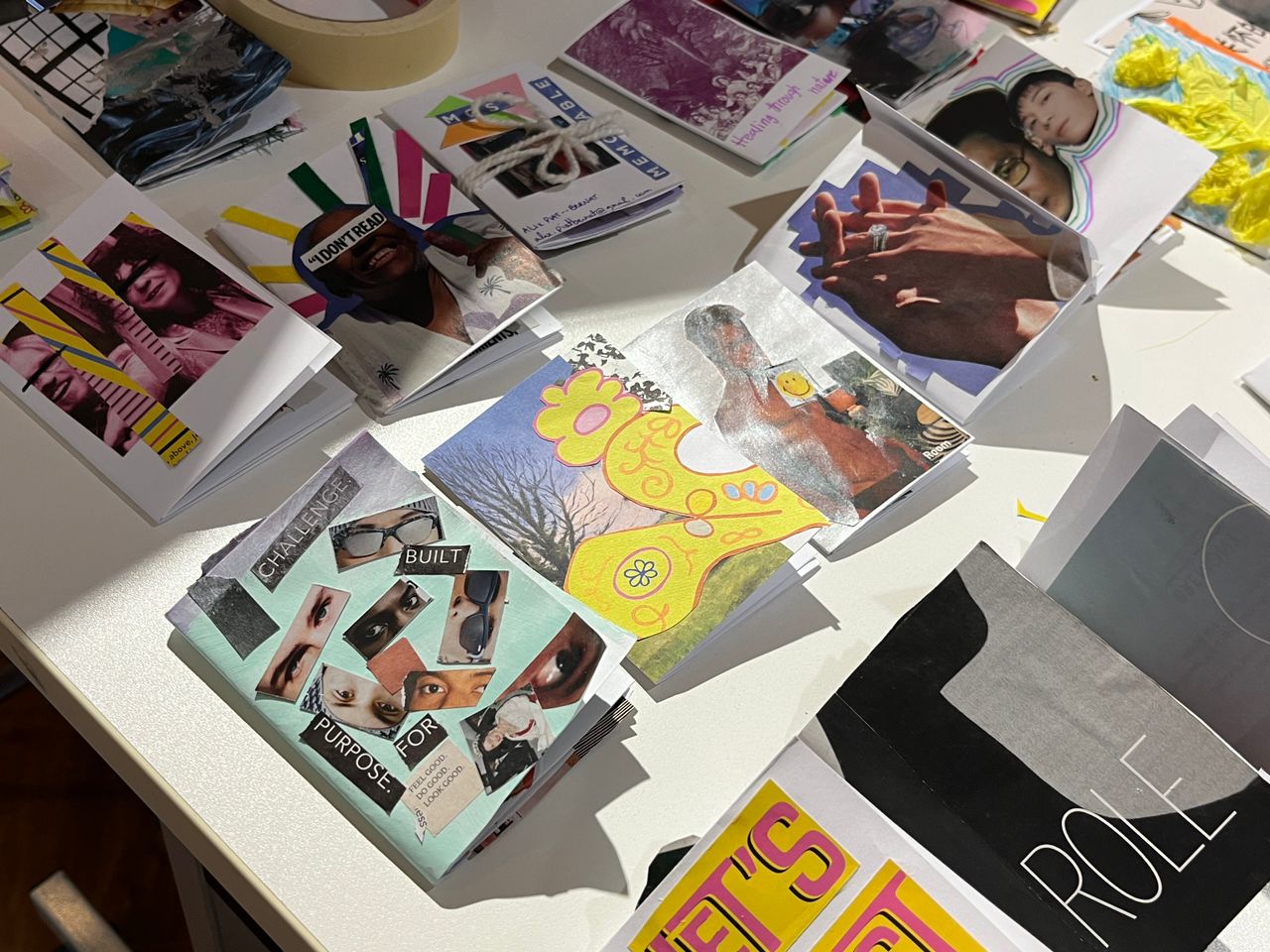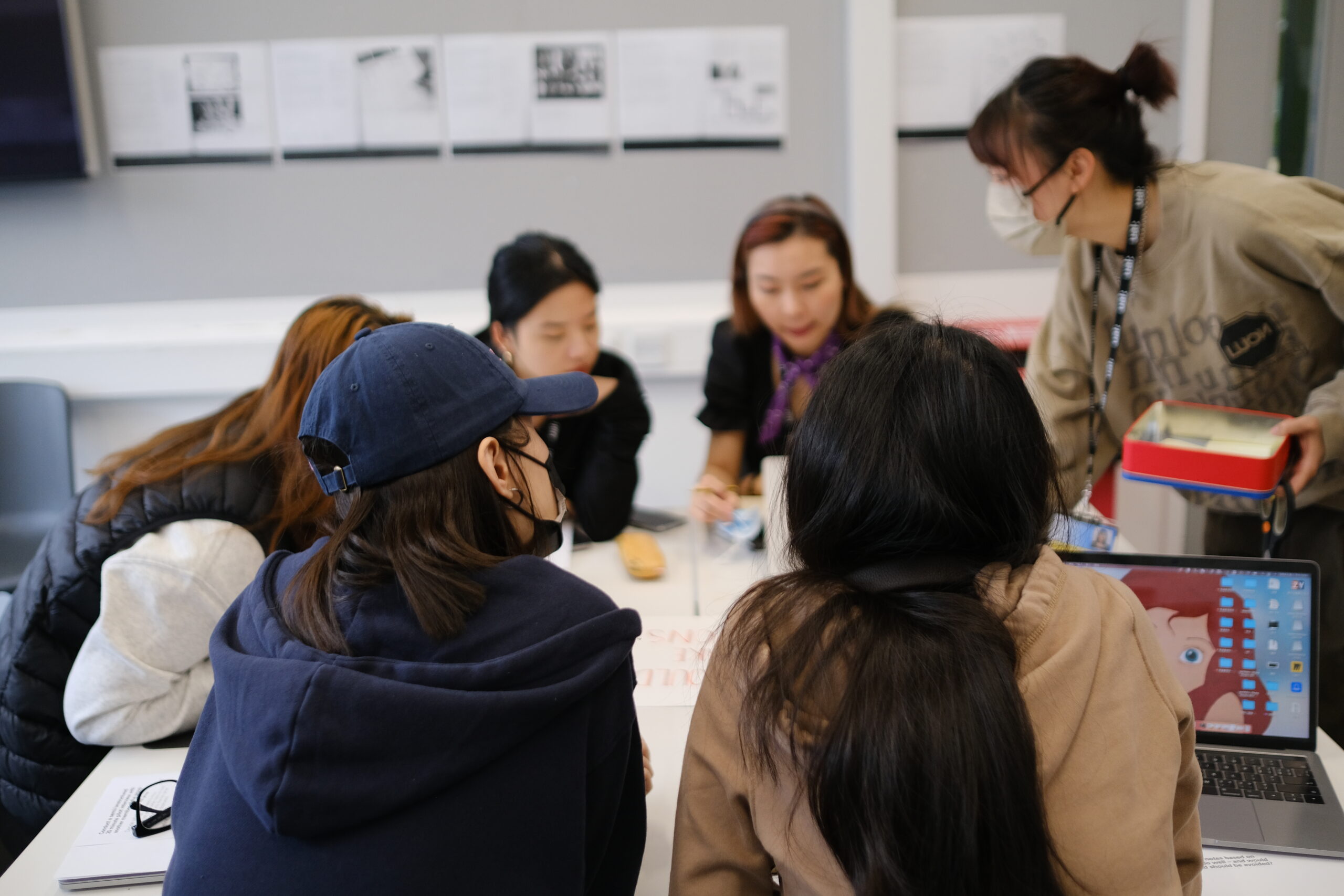Care Curriculum
A Participatory Democracy Event
2022 • Social impact design • 7 weeks • ux design + Research
Overview
This is a participatory democratic event meant to foster community and collective re-imagining of society and culture with the aim of breaking away from traditional hierarchical power structures. It is the visual format of Extinction Rebellion's People's Assembly and was completed with the support of one of its co-founders Clive Russell and the Univeristy of the Arts London (UAL).
Framework
This project's framework is rooted in an anti-capitalist philosophy that draws inspiration from grassroots movements like los Indignados and Occupy Wall Street. Guided by anthropologist and activist David Graeber's work, the philosophy centers around prioritizing collective care and freedom over production and consumption.
My Role
I developed and led research and discovery workshops using creative engagement methods. I conducted secondary research, facilitated group discussions, and analyzed primary research findings for key themes and insights. For the final event, I acted as a facilitator, performer, and drew on past project management experience to efficiently coordinate logistics to meet deadlines.
Methodology
- Literature Review
- Field Research (Posters, Interviews, AEIOU)
- Workshop (Zine Making + Animal Curriculum Build + Neglected Things)
- Open Forum
- New Metaphors
- Branding
- Practice Visual Assembly on Care in Institutions
Outcome
Collective Redesign. The project culminated in a Visual Assembly co-designing a Curriculum of Care. A large, standing open book installation memorialized the collective design outcomes as the centerpiece of the physical event. We also created a small PDF package containing guidelines, from structure to activities and tools, to replicate this visual assembly at any time and place.
The Brief
Design and facilitate a Visual Assembly on the topic of The Curriculum of Care
Design Process
Embodying the format



Discussion + Group Values
By acting as a people’s assembly, our team collaboratively and democratically used techniques such as the hand signals and voting to define our guiding principles and values.
Then, we defined our values as follows:
- Mutual Aid
- Curiosity
- Trust
- No Power/ Knowledge Hierarchy
How do we define Care and Curriculum?
We engaged in a long discussion, moderated non-hierarchically, and created the framework for this project. Our reading of “Classroom Management as a Curriculum of Care” by Carla Shalaby was crucial, as we extended her definition of Care to all: Humans, Non-Humans, and the Environment.
“Care is not about being kind or charitable; rather, care is about being fair, inclusive, and in solidarity with the most vulnerable.”
We defined Curriculum as activities, classes, people, and spaces involved in education.


Planning + Time Management
We created a roadmap to manage our time and resources in preparation for the final event.
Inspiration
Horizontal Hierarchies and challenging power structures: Past, Present, and Conceptual


Collective gardening initiative at UAL.

Tapestries from the "Our Time on Earth" exhibition at the Barbican in London, UK.

Smikra Wahikwa designs at the "Our Time on Earth" exhibition at the Barbican in London, UK.
Primary Research
AEIOU + Interviews + Posters
We visited the dining hall and libraries at Central Saint Martins (CSM) and London College of Communication (LCC), UAL to conduct an AEIOU, student interviews, and hang posters for anonymous engagement with the prompt "What kind of care do you need from your university?"





Findings + Themes
- AEIOU: Space can convey a sense of community when it's used to reflect the students' concerns, spark dialogue, and provide comfort.
- Posters: Flexibility and accessibility supports were important.
- Interviews: Students appreciated physicality, collective learning, and additional resources.
Workshops
Visualizing Care: Zine Making
In order to ground our research of these theoretical concepts into the real and relatable, we utilized the metaphor of a cookbook. We asked participants to create a recipe for the curriculum of care. What ingredients and steps would be needed?




Designing for the Non-Human: Animal Curriculum
Participants were asked to create a school for a group of animals, meeting all of their unique needs. They designed a school building, curriculum, and play activities. This out of the box workshop yielded the most interesting outcomes because of how groups approached the activity, measured success, and incorporated inclusive design elements throughout.




Understanding the Other Side: Re-Imagining Neglected "Things"
By understanding neglect or a “lack of care” better- what it looks and feels like for people, we can deepen our understanding of care. We asked participants to identify a neglected area of the UAL school building, and redesign it to center care.


Insights + design direction
How can we apply what we've learned?
- Structure: We discovered that incorporating a discussion, planning, and building phase yielded the best results. This format engaged participants progressively, allowing their involvement to evolve over time and offering diverse avenues for contribution.
- Visual Guidance: Given the visual nature of the assembly, it was vital to strike a balance between simplicity and impactful visuals. This ensured effective guidance for an event centered on conceptual and theoretical concepts, while also grounding it in accessible and tangible elements.
- Collaborative Discourse: The assembly's most influential facet was providing participants with the tools and environment to reimagine societal aspects. Clear and succinct prompts were crucial, enabling all group members to confidently contribute to the discourse.
Testing + Improvement
Trial Run: Co-Design Workshop
We applied all of our findings and the Visual Assembly guidelines to lead a group of 30 students and staff in a trial care curriculum co-design workshop. It was a chance to test out the structure, facilitation, and flow for the final event and incorporate participant feedback towards the final outcome.



Feedback + 3 Key Improvements
1. Sustainability
We used paper scraps and pens to brainstorm and organize initial group ideas, and received feedback that wasn’t sustainable as they would just be disposed of afterwards. So we changed it to use a single sheet of paper, front and back, in the final event to be suspended as part of the final sculptural outcome.
2. Engagement
Initially, the event was more discussion based; however, this did not allow for multiple types of engagement or an equal sharing of ideas from those that are more shy or hesitant to speak in a group. In the final event, we included a brainstorming and material building portion, as it had previously worked well to engage people and visually display ideas.
3. Clarity
Some of the questions were too theoretical or otherwise unclear for participants. In the final event, we focused on the physical and real aspects of a curriculum as a theme and simplified the questions to reflect that.
Final OUtcome
Visual Assembly on "Curriculum of Care" Event
Learnings + Future Application
This was one of my absolute favorite projects, and I learned a lot about working with conceptual ideas and how to ground them in reality through creative research methods, visual mediums, and metaphors. The Visual Assembly and People’s Assembly, created by David Graeber and led by Extinction Rebellion, challenged my notions of what democracy can look like and how co-design can work on a large scale to re-imagine structures, systems, and policies that have real impacts on us.
The journey through the visual assembly project was an enlightening exploration that taught me invaluable lessons and paved the way for exciting possibilities ahead. As I reflect on the experience, several key learnings stand out, shaping my path and propelling me toward new directions:
- Empowerment Through Collaboration: The heart of this project was the power of collaborative design. Witnessing participants from diverse backgrounds engage passionately, empowered to reshape societal paradigms, underscored the potential of collective intelligence. This experience solidified my belief in the transformative nature of inclusive collaboration.
- Balancing Complexity with Accessibility: Striking the delicate equilibrium between intricate theoretical ideas and tangible accessibility was both a challenge and a revelation. Through the assembly's visual elements, I discovered the art of communicating complex concepts in ways that resonate universally, an insight that will undoubtedly influence my future design endeavors.
- Fostering Inclusive Conversations: Crafting prompts that fostered inclusive, confident participation amplified the richness of our conversations. The experience affirmed the importance of clear, concise communication and has left me eager to create more spaces for diverse voices to be heard and valued.
- Guiding Vision with Structure: The meticulously designed structure of the assembly journey provided participants with a framework that nurtured engagement and investment. This reinforced my appreciation for the role of structured guidance in shaping meaningful experiences and will guide my approach to future projects.
Recognition
A huge thank you to Clive Russell, who graciously gave his time and offered thoughtful reflections and provocations along the way. It was an immense honor to work with you and humbling to have you participate in our final event.
Farah Zia Ⓒ 2023